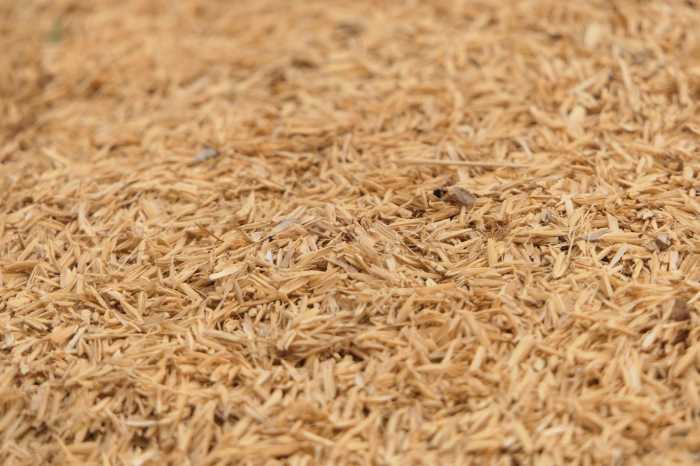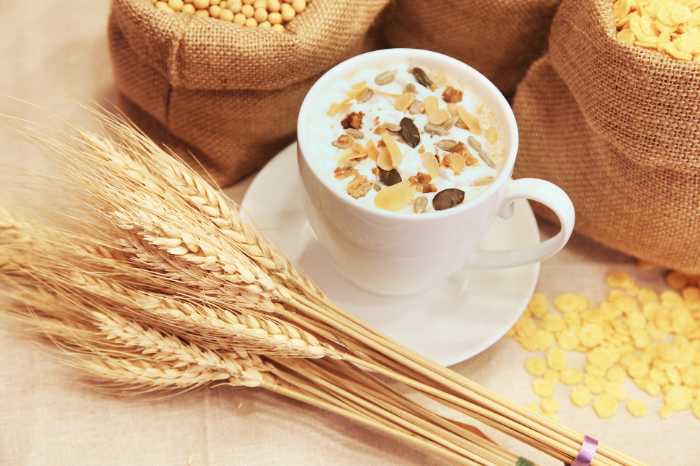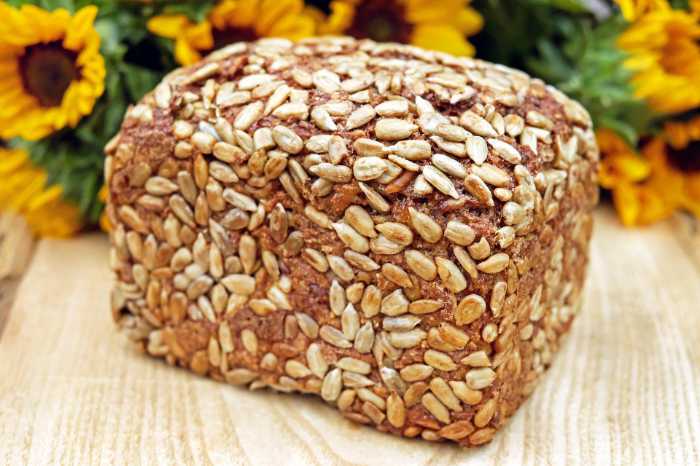Wheat bran is a by-product of wheat milling. It is the outer layer of the wheat kernel that is removed during the milling process. Wheat bran is high in fiber and contains many important nutrients, including thiamin, niacin, vitamin B6, magnesium, phosphorus, and zinc. In this blog post, we will discuss wheat bran and what it is all about.

What Is Wheat Bran?
Wheat bran is the hard outer layer of wheat grain. It is also a by-product of milling wheat flour, and it can be used for both human and animal consumption. Although it does not contain the same nutrients as wheat germ or wheat germ oil, it is still a good source of fiber, protein, and minerals.
Wheat bran can be added to foods such as baked goods, cereals, and casseroles. It can also be used as a thickener or binding agent in recipes. When used in large amounts, wheat bran can give food a slightly gritty texture. However, this is not generally considered to be a negative quality, as many people actually enjoy the added texture and flavor that wheat bran provides.
In addition to its culinary uses, wheat bran is also popular as a natural remedy for various health conditions. For example, some people believe that it can aid in digestion and help to reduce cholesterol levels. Wheat bran is also sometimes used as a laxative or diuretic. Although more research is needed to substantiate these claims, there is some evidence that wheat bran may indeed offer health benefits.
Wheat Kernel
Wheat kernels, also known as wheat berries, are the whole seeds of the wheat plant. They can be eaten whole, milled into flour, or used to sprout new wheat plants. Wheat kernels are a good source of fiber, protein, and vitamins, making them an important part of many diets.
Wheat bran is a byproduct of milling wheat kernels into wheat flours. It consists of the outer layers of the kernel that are removed during milling. Wheat bran is often used as animal feed or as a soil amendment. It can also be consumed by humans, though it is not as nutrient-rich as wheat kernels themselves. Some people find wheat bran to be difficult to digest.
While wheat kernels and wheat bran both come from the same plant, they are quite different products. Wheat kernels are the whole seeds of the plant and can be eaten or milled into flour, while wheat bran is a byproduct of milling and is often used for animal feed or soil amendment. Wheat kernels are more nutrient-rich than wheat bran and are a good source of fiber, protein, and vitamins.

Wheat Grains
Grains are the edible seeds of certain grasses, such as wheat, rice, and barley. Though often referred to as “corn,” the term “grain” actually refers to any small, hard seed. Wheat grains are small, hard seeds that come from a wheat plant. The wheat plant produces a seed that is encased in a protective outer layer called the bran. The bran is removed during the milling process, leaving the small, hard wheat grain. Wheat grains are used to make flour, which is then used to make bread, pasta, cereal, and other foods. Wheat grains are a good source of fiber and protein, and they can be cooked or ground into flour.
Soluble And Insoluble Fiber
Wheat bran is a type of dietary fiber that is derived from the outer layer of wheat kernels. Unlike other types of wheat, wheat bran does not contain gluten, which makes it a suitable choice for people who are gluten-sensitive or have celiac disease. Wheat bran is high in both soluble and insoluble fiber, which means that it can help to regulate digestion and promote regularity. Additionally, wheat bran has been shown to lower cholesterol levels and reduce the risk of heart disease. For these reasons, wheat bran is often used as a nutritional supplement or added to foods such as cereal and bread.
Nutritional Benefits Of Wheat Bran
Nutritionists often recommend wheat bran as a healthy way to add fiber to your diet. But wheat bran is more than just an excellent source of dietary fiber. It is also a good source of protein, vitamins, and minerals.
Wheat bran is high in insoluble fiber, which helps to keep the digestive system healthy and prevents constipation. Soluble fiber, found in smaller amounts in wheat bran, helps to lower cholesterol levels and regulate blood sugar levels. In addition to fiber, wheat bran is also a good source of protein. One cup of wheat bran contains about seven grams of protein. Wheat bran is also rich in vitamins and minerals, including iron, magnesium, zinc, and selenium.
While wheat bran can be a healthy addition to your diet, it is important to eat it in moderation. Because it is high in fiber, eating too much wheat bran can cause gas and bloating. If you are not used to eating foods high in fiber, start by adding a small amount of wheat bran to your diet and gradually increase the amount you eat over time.
Health Benefits Of Wheat Bran
Wheat bran is a nutritious, versatile product that offers a number of health benefits. Some of its health benefits are as follows:
Aids Digestive Health
Wheat bran has a number of health benefits and is particularly effective in aiding digestive health. The high fiber content helps to bulk up stools, making them softer and easier to pass. This can help to relieve constipation and reduce the risk of diverticular disease.
Reduces Cholesterol Levels
This insoluble fiber has a number of health benefits, including the ability to reduce cholesterol levels. Cholesterol is a type of fatty substance that can build up in the arteries, leading to heart disease. Soluble fibers like wheat bran bind with cholesterol in the intestines and help to remove it from the body.

Improves Heart Health
Wheat bran is a good source of fiber, minerals, and vitamins. It also contains phytochemicals that may have health benefits. Some research suggests that wheat bran can improve heart health.
May Prevent Against Colon Cancer
Among the many health benefits of wheat bran is its potential to help prevent colon cancer. This is due to the fact that wheat bran contains a high level of dietary fiber, which has been shown to reduce the risk of colon cancer by promoting regular bowel movements and reducing the amount of time that toxins are in contact with the colon. In addition, wheat bran also contains lignans (phytoestrogens) and other phytonutrients that have been shown to have cancer-protective effects.
Regulate Blood Sugar Level
Wheat bran can also help regulate blood sugar levels. This is because it is low on the glycemic index, meaning it doesn’t cause spikes in blood sugar levels.
Promotes Healthy Gut Bacteria
The high fiber content in wheat bran also promotes the growth of healthy gut bacteria. These friendly bacteria help to keep the digestive system healthy and play a role in immunity, weight control, and heart health.
How To Add Wheat Bran To Your Diet
Adding wheat bran to your diet is a great way to get more fiber and essential nutrients. There are a few different ways to do this, and the best method will depend on your personal preferences and dietary needs. One option is to add wheat bran to breakfast cereals or oatmeal. This can help to boost the nutrient content of these foods and make them more filling. Wheat bran can be found in most health food stores and can be added to hot cereals, muffins, or casseroles.

Another way to add wheat bran to your diet is to use it as breading for chicken or fish. This will provide a crunchy contrast to the soft flesh of the seafood or poultry, and the wheat bran will help to absorb excess moisture. Finally, you can also add wheat bran to soups or stews. This will thicken the soup or stew and add an extra layer of flavor. No matter how you choose to add it, wheat bran is a great way to increase the nutrient density of your diet.
For best results, add wheat bran fractions to your diet gradually over a period of time. Start with 1/4 cup per day and increase by 1/4 cup every few days until you reach the desired amount. Remember to drink plenty of water when adding fiber to your diet to avoid constipation. Adding wheat bran to your diet is a simple and effective way to improve your overall health.
Final Thoughts
As we have seen, wheat bran is an excellent source of natural fiber supplement. It can help improve digestion and reduce the risk of constipation. Additionally, wheat bran may also help to lower cholesterol levels and protect against colon cancer. With all of these potential health benefits, it’s no wonder that wheat bran is a popular addition to many people’s diets. If you’re looking for a way to boost your fiber intake, wheat bran is definitely worth considering.
Read More: